Smoking Seeds

Author: Glenn Leiper
Published: Journal December 2021
In recent years, knowledge about what triggers native seed germination has improved, and we now have additional techniques other than scarification and hot water treatment at our disposal. Some native plant nurseries and enthusiasts have been using ‘smoke water’ to help break seed dormancy and trigger germination, and these products are available from some businesses. Another similar technique that is proving successful for some difficult to germinate species is smoking the seeds.
Jan Glazebrook, leader of the Logan River Branch NPQ Propagation Group at the Eagleby Wetlands Community Nursery, recently demonstrated a simple yet effective method to smoke seeds. Species that might respond to this technique include Commersonia, Hibiscus, Abelmoschus, Melhania, Corchorus, Ptilotus, some hard to germinate daisies, and many others.
Equipment and materials required
- A heat and fire-proof container such as a metal pot
- A fine metal sieve to hold the seeds
- Dry leaf litter and paper
- Matches
- A heat-proof cover for the pot
- And seeds.
(It would be a good idea to also have a hose and/ or fire blanket at the ready for any unexpected accident.)
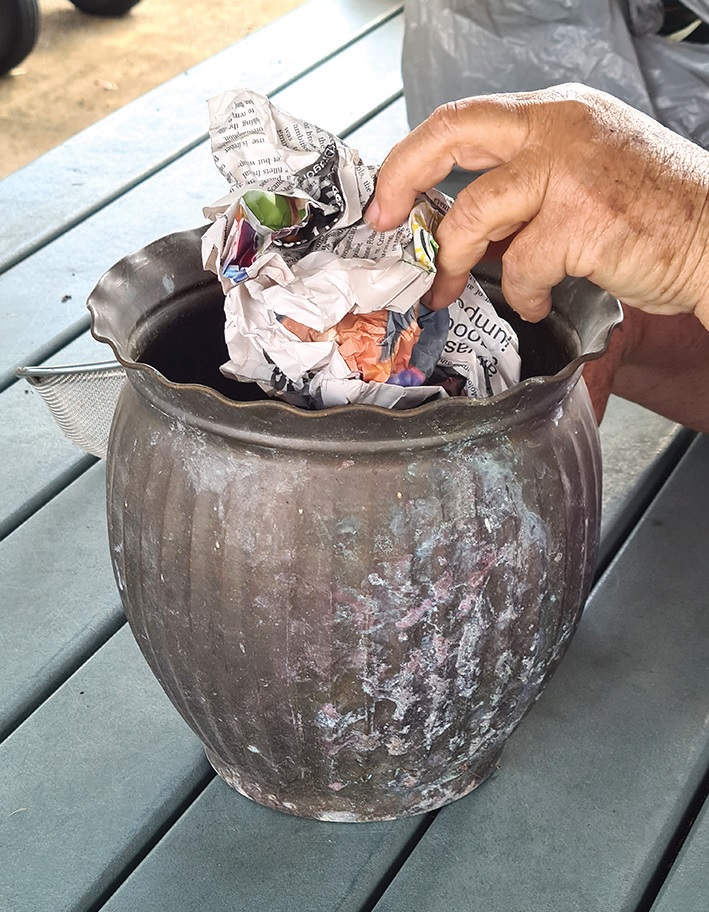
Step 1
Place some scrunched up paper in the container/pot, as well as some dried leaves from native plants such as Eucalypts, Leptospermums, etc.
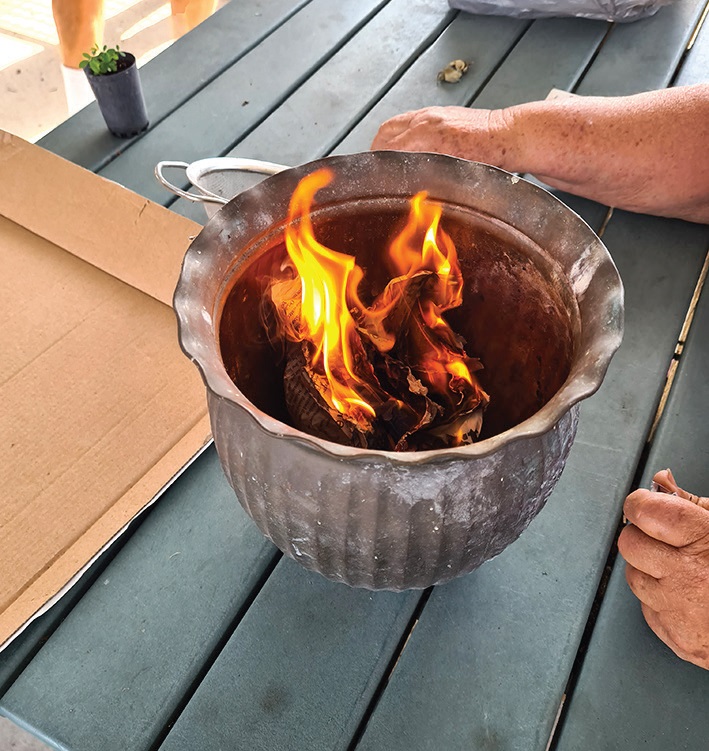
Step 2
Light the paper, leaves and fine twigs, allowing it to burn well for a short time.
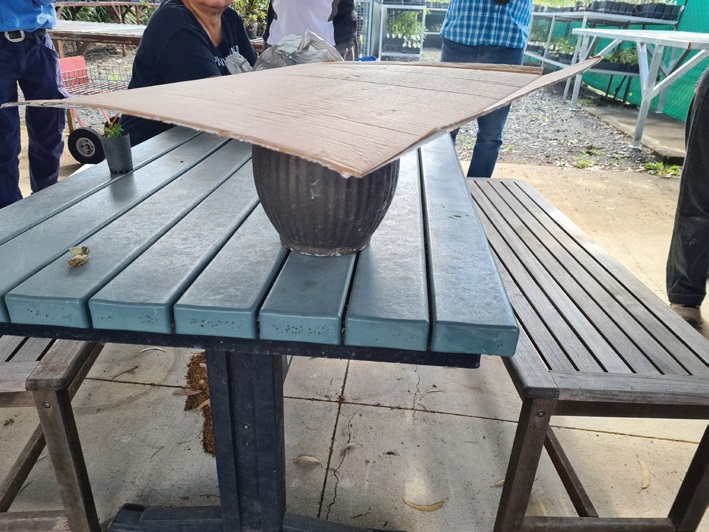
Step 3
Cover the top of the container/pot briefly once the flames have started dying down, cutting off the oxygen supply so that the flames are extinguished. Now, a lot of smoke will be generated instead of flames.
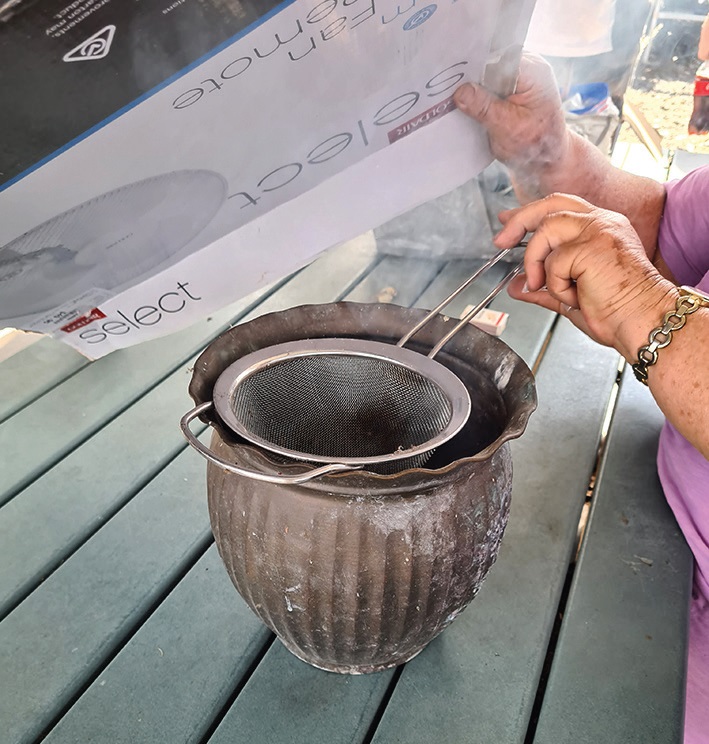
Step 4
Place the seeds into the metal sieve and sit this sieve on top of the container/pot with the smoking contents. Cover it immediately. Remember you’re not trying to heat the seeds but just to smoke them.
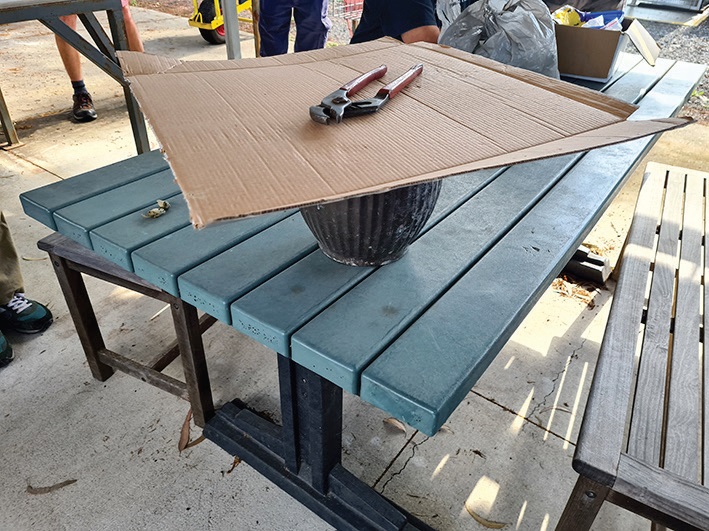
Step 5
Leave the seeds smoking in this set-up for a minimum of 30 to 60 minutes. Jan even leaves them sometimes for up to 6 hours.
Step 6
Carefully remove the hot sieve and empty the seeds. Sow the seeds as normal then water.
To date, we’ve had improved results from this technique on seeds we’ve tried.
Footnote:
Kings Park in Western Australia has a list of genera that have been found to have seeds responsive to smoke treatment – refer to this website for the list and further information.
